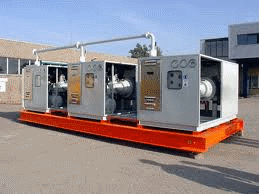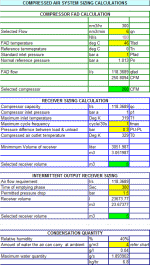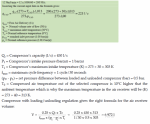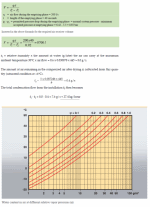COMPRESSED AIR SYSTEM

Description
The compressed air system sizing calculation involves calculating the compressor FAD (free air delivery), selecting the compressor, determining the size of the receiver, and calculating the condensation quantity. The FAD calculation involves determining the selected flow, temperature, reference pressure, and compressor. The receiver sizing calculation involves determining the compressor capacity, inlet pressure, maximum temperature, cycle frequency, pressure difference, outlet temperature, and minimum volume. Intermittent output receiver sizing involves determining air flow requirement, time of emptying phase, permitted pressure drop, receiver volume, and selecting receiver volume. Condensation quantity involves determining relative humidity, the amount of water the air can carry at ambient, and the maximum water quantity.
COMPRESSED AIR SYSTEM SIZING CALCULATION
COMPRESSOR FAD CALCULATION
Selected Flow nm3/min
FAD temperature deg C
Reference temperature deg C
Standard inlet pressure bar a
Normal reference pressure bar a
FAD flow l/s
Selected compressor
RECEIVER SIZING CALCULATION
Compressor capacity l/s
Compressor inlet pressure bar a
Maximum inlet temperature Deg K
Maximum cycle frequency cycle/30s
Pressure difference between load & unload bar
Compressed air outlet temperature Deg K
Minimum Volume of receiver liter
Selected receiver volume m3
INTERMITTENT OUTPUT RECEIVER SIZING
Air flow requirement l/s
Time of emptying phase Sec
Permitted pressure drop bar
Receiver volume l
Selected receiver volume m3
CONDENSATION QUANTITY
Relative humidity %
Amount of water the air can carry at ambient g/m3
Maximum water quantity g/s
Calculation Reference
Compressed Air
Reciever Sizing Calculation
Air Pressure Tools
Calculation Preview
Full download access to any calculation is available to users with a paid or awarded subscription (XLC Pro).
Subscriptions are free to contributors to the site, alternatively they can be purchased.
Click here for information on subscriptions.




